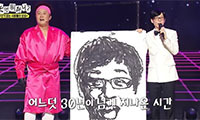How Language Shapes The Way People Think
Faced with pictures of odd clay creatures sporting prominent heads and pointy limbs, students were asked to identify which “aliens” were friendly and which were not.
The students, at Carnegie Mellon University in Pittsburgh, were not told that the aliens fell naturally into two groups, although the differences were subtle and not easy to describe.
Some had lumpy, misshapen heads. Others had smoother domes. After students assigned each alien to a category, they were told whether they had guessed right or wrong, learning as they went that smooth heads were friendly and lumpy heads were not.
The experimenter, Dr. Gary Lupyan, added a little item of information to one test group. He told the group that previous subjects had found it helpful to label the aliens, calling the friendly ones “leebish” and the unfriendly ones “grecious” (both nonsense words), or vice versa.
When the participants found out whether their choice was right or wrong, they were also shown the appropriate label. All the participants eventually learned the difference between the aliens, but the group using labels learned much faster. Naming, Dr. Lupyan concluded, helps to create mental categories.
Language also has a significant role in seeing and remembering where objects are in space. Dr. Dedre Gentner at Northwestern University in Illinois and her colleagues conducted experiments on the spatial reasoning of hearing children and children who “home-sign.”
Home-signers have hearing parents, but they are congenitally deaf and have never been taught a sign language, said Susan Goldin-Meadow, an expert in homesign. The gestural language they develop is invented solely by themselves.
The children were shown two sideby- side boxes. Internally, each box was divided in three. In each space was a card.
During each trial, the experimenter took a card from the first box and showed the child that it had a special star on the back. Replacing it in the first box in the same space, the experimenter asked the child to find where the special card would be in the second box. Essentially, the children were asked to map the position of the target card in the first box to the same position in the second.
The researchers found that children without words for spatial relationships, whether young or home-signers, had much more trouble finding the special card in the second box than older hearing children who had learned the relevant words.
“By giving us a framework for marshaling our thoughts, language does a lot for us,” Professor Gentner said. “Because spatial language gives us symbols for spatial patterns, it helps us carve up the world in specific ways.”
Another subject in the debate over language and perception is color. Because languages divide the spectrum differently, researchers have asked whether language affected how people see color. English, for example, distinguishes blue from green.
Most other languages do not make that distinction. Is it possible that only English speakers really see those colors as different?
Some experiments suggested that color terms influenced people in the moment of perception. Others suggested that the language effect took place only after basic perception occurred. The consensus was that different ways to label color probably did not affect the perception of color.
Last year, Lera Boroditsky and colleagues published a study in The Proceedings of the National Academy of Sciences showing that language could affect how quickly perceptions of color are categorized. Russian and English speakers were asked look at three blocks of color and say which two were the same.
Russian speakers must distinguish between lighter blues, or goluboy, and darker blues, siniy, while English speakers do not have to, using only “blue” for any shade. If the Russians were shown three blue squares with two goluboy and one siniy, or the other way around, they picked the two matching colors faster than if all three squares were shades from one blue group. English makes no distinction between shades of blue, and English speakers fared the same no matter the mix of shades.
In two different tests, subjects were asked to perform a nonverbal task at the same time as the color-matching task. When the Russians simultaneously carried out a nonverbal task, they kept their color-matching advantage. But when they had to perform a verbal task at the same time as color-matching, their advantage began to disappear. The slowdown suggested that the speed of their reactions did not result just from a learned difference but that language was actively involved in identifying colors as the test was happening.
In another experiment, Dr. Lupyan, of Carnegie Mellon, showed subjects a series of chairs and tables . Some subjects were asked to press a button indicating that the picture was of a table or a chair. Other subjects pressed a button to make a nonverbal judgment about the pictures, for example, to indicate whether they liked them or not. Dr. Lupyan found that the subjects who used words to label the objects had more trouble remembering whether they’d seen a specific chair before than subjects who had only pressed a button in a nonverbal task.
Language helps us learn novel categories, Dr. Lupyan said. The problem is that after a category has been learned, it can distort the memory of specific objects, getting between us and the rest of the nonabstract world.
스마터리빙
more [ 건강]
[ 건강]이제 혈관 건강도 챙기자!
[현대해운]우리 눈에 보이지 않기 때문에 혈관 건강을 챙기는 것은 결코 쉽지 않은데요. 여러분은 혈관 건강을 유지하기 위해 어떤 노력을 하시나요?
 [ 건강]
[ 건강]내 몸이 건강해지는 과일궁합
 [ 라이프]
[ 라이프]벌레야 물럿거라! 천연 해충제 만들기
 [ 건강]
[ 건강]혈압 낮추는데 좋은 식품
[현대해운]혈관 건강은 주로 노화가 진행되면서 지켜야 할 문제라고 인식되어 왔습니다. 최근 생활 패턴과 식생활의 변화로 혈관의 노화 진행이 빨라지고
사람·사람들
more많이 본 기사
- 180일간 김건희만 판 특검 오늘 수사 종료…’V0’ 단죄 성과
- 뉴욕에 3년만에 최대 폭설…항공기 수천편 결항·지연
- ‘파친코’ 이민진 작가 “맘다니 뉴욕시장, 긍정적 변화 기대”
- 이이경·조세호 다 떠나고..유재석 곁엔 결국 ‘무도’ 인연이었다
- ‘AI 조작 번복’ 폭로자 vs ‘유재석 패싱’ 이이경..하차 잔혹사로 번진 사생활 논란 [2025 연말결산]
- 여야, ‘통일교·종합 특검’ 정면충돌 예고…연말연시 대치정국
- “트럼프, 29일 네타냐후 회담서 가자휴전 이행문제 제기키로”
- ‘6·3 大戰’ 앞둔 대통령실 참모들 시선집중…10여명 출마 거론
- 캐나다, 우크라에 18억달러대 추가 재정 지원키로
- 쿠팡 김범석, 30~31일(한국시간) 연석청문회 또 불출석 의사… “일정 있어”
- ‘통일교 자금관리’ 한학자 前비서실장 재소환…피의자 전환
- “개인 선정은 SON이 유일?” 손흥민, 축구계 8대 기적 선정이 더 대단한 이유 “퀴라소 월드컵 진출보다 멋져”
- ‘이강달’ 강태오, 로코 달인은 다르다.. “김세정도 눈빛 좋다고”
- 젤렌스키 미국행… “레드라인 있지만 타협점 찾을 수 있어”
- 황하나, 남편 사망→캄보디아서 남친과 출산..귀국 후 구속 ‘파란만장’
- 태국-캄보디아, ‘101명 사망’ 교전 20일만에 휴전
- NASA 신임 국장 “美, 트럼프 임기내 달에 다시 갈것”
- IS 확실했나…트럼프 ‘성탄절 나이지리아 폭격’ 갸우뚱
- 오윤아 “子, 학교 떨어져 잘못 키웠나..방치 했나 싶어 눈물”
- 뉴욕시 폭설에 항공기 수천편 취소·지연 사태
- 새해 맞아 백만 달러 상금 증정 이벤트와 다양한 설 행사 선보여
- 마지막 토요일도 도심 집회… “내란 … 1
- “아동 수출국 오명 벗는다” 70년 만에 해외입양 중단
- [이지 사이언스] “온난화 막으려면 세계인구 44% 식단 바꿔야…문제는 소고기”
- LA 등 서부에 사흘째 폭우…동부엔 폭설 예보
- 쿠팡 ‘정부 반박’ 영문성명 미묘한 표현차… ‘잘못된 비난’ 부각
- 새로운 콘포밍 론 한도
- 특검, ‘로저비비에’ 김기현 부부 기소…尹 뇌물 수사는 경찰로
- 보수 야당 “의원직 사퇴하고 법심판 받아야”…김병기에 총공세
- “올해 최고 주목받은 테크 거물은 머스크 아닌 래리 엘리슨”
- 국힘 “신천지로 통일교 특검 물타기 안돼”…與 “성역없이 규명”
- “출생시민권은 사기”⋯ 이민 2세대 공격 초점 맞춘 트럼프
- 트럼프 “소말릴란드 아는 사람 있나?”…이스라엘 승인에 ‘NO’
- 올해 美 기업 파산신청 증가… “관세·고물가·고금리 원인”
- ICE 버지니아 구금시설 ‘포화’…수감자 역대최고
- 물류거점창고에 불체자 8만명 수용 추진
- 우크라이나 포로수용소의 북한군인 동무들에게
- 황하나, 마약 도피 중 캄보디아서 출… 1
- VA·MD 7명 생굴 먹고 식중독…22개주 60여명 감염
- ‘손흥민 감격의 첫 우승’ 올해 축구계 기적 톱8 선정 ‘선수로는 유일’
- 16세로 성장한 버클리 문학, 성대한 송년 파티
- 뉴욕·뉴저지 연말 대대적 음주운전 단속
- ‘학자금 상환’ 안하면 임금압류
- “엔비디아, AI칩 스타트업 인수 아닌 기술 계약으로 규제 회피”
- 소싯적 ‘치기어린’ 주소 “굿바이”…지메일 주소변경기능 도입
- 국제은값 폭등에 개인투자자들 銀투자 대거 유입
- ‘NCT 탈퇴’ 태일, 성폭행 혐의로 결국 감옥行..징역 3년 6개월 확정
- 찰스 3세, 내년 방미 추진…트럼프에 英왕실 ‘매력 공세’될까
- ‘서해 공무원 피격 은폐’ 혐의 서훈… 2
- 8시즌 뛰고 ML 역대 17위 “오타니 GOAT 될 것”, ML 역대 50인 선정
1/5지식톡

-
 미 육군 사관학교 West Poin…
0
미 육군 사관학교 West Poin…
0https://youtu.be/SxD8cEhNV6Q연락처:wpkapca@gmail.comJohn Choi: 714-716-6414West Point 합격증을 받으셨나요?미 육군사관학교 West Point 학부모 모…
-
 ☝️해외에서도 가능한 한국어 선생님…
0
☝️해외에서도 가능한 한국어 선생님…
0이 영상 하나면 충분합니다!♥️상담신청문의♥️☝️ 문의 폭주로 '선착순 상담'만 진행합니다.☎️ : 02-6213-9094✨카카오톡ID : @GOODEDU77 (@골뱅이 꼭 붙여주셔야합니다…
-
 테슬라 자동차 시트커버 장착
0
테슬라 자동차 시트커버 장착
0테슬라 시트커버, 사놓고 아직 못 씌우셨죠?장착이 생각보다 쉽지 않습니다.20년 경력 전문가에게 맡기세요 — 깔끔하고 딱 맞게 장착해드립니다!장착비용:앞좌석: $40뒷좌석: $60앞·뒷좌석 …
-
 식당용 부탄가스
0
식당용 부탄가스
0식당용 부탄가스 홀세일 합니다 로스앤젤레스 다운타운 픽업 가능 안녕 하세요?강아지 & 고양이 모든 애완동물 / 반려동물 식품 & 모든 애완동물/반려동물 관련 제품들 전문적으로 홀세일/취급하는 회사 입니다 100% …
-
 ACSL 국제 컴퓨터 과학 대회, …
0
ACSL 국제 컴퓨터 과학 대회, …
0웹사이트 : www.eduspot.co.kr 카카오톡 상담하기 : https://pf.kakao.com/_BEQWxb블로그 : https://blog.naver.com/eduspotmain안녕하세요, 에듀스팟입니다…
케이타운 1번가
오피니언

새해 더 중요해지는 노동법 준수

연말연시, 안전하고 차분하게
 캐슬린 파커 워싱턴포스트 칼럼니스트
캐슬린 파커 워싱턴포스트 칼럼니스트 [캐슬린 파커 칼럼] 지미 라이의 마지막 희망
 유경재 나성북부교회 담임목사
유경재 나성북부교회 담임목사 [한국춘추] 미국의 힘
 전병두 서북미수필가협회 회원
전병두 서북미수필가협회 회원 [금요단상] 비자 발급
 박일근 / 한국일보 수석논설위원
박일근 / 한국일보 수석논설위원 [지평선] 스님의 주례사
 신상철 / 고려대 고고미술사학과 교수
신상철 / 고려대 고고미술사학과 교수 [미술 다시보기] 신의 모습을 닮고자 한 예술가
 스티브 강 전 한인민주당협회 회장
스티브 강 전 한인민주당협회 회장 [스티브 강 ‘인사이드 미국’] 2026 중간선거: 트럼프 지지율 하락이 말해주는 것
 김홍일 케이유니콘인베스트먼트 대표
김홍일 케이유니콘인베스트먼트 대표 [기고] 안정의 기준은 어떻게 제도가 되었나
1/3지사별 뉴스

물류거점창고에 불체자 8만명 수용 추진
도널드 트럼프 행정부가 이민자 구금·추방을 효율화하기 위해 전국 물류거점 창고에 8만명 규모의 수용시설 확보를 추진한다고 24일 워싱턴 포스트…
‘학자금 상환’ 안하면 임금압류

“온 세상에 희망·평화의 빛 스며들길”
가자지구와 우크라이나에서의 전쟁, 고립과 불평등으로 세상이 어지러운 가운데 워싱턴 지역 각급 한인교회와 성당들이 성탄절을 맞아 일제히 예배와 …
“연말은 스트레스·새해 결심은 없다”

“올해 최고 주목받은 테크 거물은 머스크 아닌 래리 엘리슨”
올해 미국에서 가장 주목받은 기술업계 거물은 일론 머스크 테슬라 최고경영자(CEO)가 아닌 래리 엘리슨 오라클 창업자·회장이라고 블룸버그 통신…
[새해부터 이렇게 달라진다] 최저임금 또 오르고… 유급 병가는 더 확대

오늘 하루 이 창 열지 않음 닫기 





















































.png)


댓글 안에 당신의 성숙함도 담아 주세요.
'오늘의 한마디'는 기사에 대하여 자신의 생각을 말하고 남의 생각을 들으며 서로 다양한 의견을 나누는 공간입니다. 그러나 간혹 불건전한 내용을 올리시는 분들이 계셔서 건전한 인터넷문화 정착을 위해 아래와 같은 운영원칙을 적용합니다.
자체 모니터링을 통해 아래에 해당하는 내용이 포함된 댓글이 발견되면 예고없이 삭제 조치를 하겠습니다.
불건전한 댓글을 올리거나, 이름에 비속어 및 상대방의 불쾌감을 주는 단어를 사용, 유명인 또는 특정 일반인을 사칭하는 경우 이용에 대한 차단 제재를 받을 수 있습니다. 차단될 경우, 일주일간 댓글을 달수 없게 됩니다.
명예훼손, 개인정보 유출, 욕설 등 법률에 위반되는 댓글은 관계 법령에 의거 민형사상 처벌을 받을 수 있으니 이용에 주의를 부탁드립니다.
Close
x